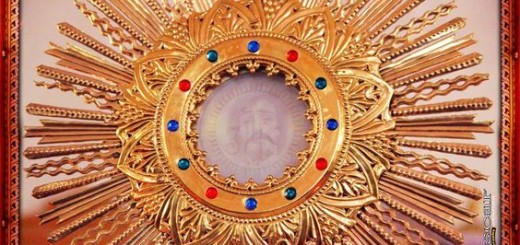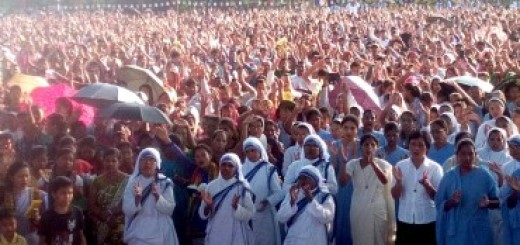Ernakulam-Angamali archdiocese to take on love marriages

Kochi (Matters India): Hundreds of Syro-Malabar Catholic couples will assemble in Kochi to address true and immature love.
“Believers should be able to differentiate true love from immature love,” says Fr Augustine Kallely, director of family apostolate of Ernakuluam-Angamaly archdiocese.
True, says the priest, is committed while in sensual love allows one to have multiple relationships.
The priest is organizing a conference on December 5 where 1,423 couples from 130 parishes of the archdiocese are expected to attend.
The main topic for an open forum discussion at a conference will be “Is premam a sin or pranayam a bliss?”
The web portal nyoooz.com says the archdiocese is organizing the conference as it is worried about its flock straying and marrying people from other religions.
The archdiocese conducted a zonal conference at Ernakulam on September 21 in preparation for the conference. It will also conduct such meets at Angamaly on September 24 and at Cherthala on October 2.
Some topics to be debated at the conference are: Difference between sensual love and true love, challenges facing healthy love, should love marriages be encouraged, should the Church start services for lovers, is love in the family essential for the formation of an individual.
Though young and impressionable minds are the target, the church, keeping generations ahead in mind, believes that the learning should begin with parents.
The conference takes place in the backdrop of increasing number of Catholics marrying people from other religions.
The growing phenomenon of Catholics marrying outside the faith and the challenges that it poses to the church in countries like India, where Christians are a minority was the subject of discussion at a recent gathering of Asian moral theologians.
Fr. Michael Peters, an Indian moral theologian who studied mixed marriages in several archdioceses in southern India between 2005 and 2010, said his survey revealed “a clear indication” that such marriages are steadily growing in the country.
In light of this trend, the church is rethinking its earlier rigid stand against marrying outside the church and is open to serving couples in this situation, Peters found, but significant challenges remain.
According to the Missionaries of the Precious Blood priest, the new trend is the result of the technological revolution of recent years that has brought drastic changes in how young people form relationships.
The July 17-20 pan-Asian meeting of Catholic ethicists in Bangalore addressed “Doing Catholic theological ethics in a cross-cultural and interreligious Asian context.”
Fr Peters found that information technology is a major contributor to the trend of mixed marriages in Asian countries.
On one level, he said, information technology itself connects young people together across religious, caste and cultural divides.
On another level, the information technology industry creates working environments that bring together legions of young hires from diverse backgrounds into the same physical location and allows them to interact with each other.
“In this scenario, our youngsters fall in love, and religion and faith at that point matter less,” Peters said, adding that such relations often end in marriages between parties of different faiths. “Their hearts are united while they differ by their faith.”
Even the working paper for the Vatican’s upcoming Synod of Bishops on the family has noticed this trend, he says. The document acknowledges that spouses in many Catholic families in Asia, North Africa and other regions are people from other religions.
While these couples bring “great richness to the church,” Peters said, they also pose difficulties, especially in countries where religious affiliation has implications in civil law. In India, for example, different religions have their own sets of personal laws that govern matters relating to family life, such as marriage, divorce and inheritance.
What is positive in all this is the church’s ability to evolve with the times, said Peters. The church that had earlier banned Catholics from marrying people of other religions now allows such relations under a dispensation called “disparity of cult,” provided the couples agree to raise their children as Catholics and the Catholic partner continues to practice the faith.
















